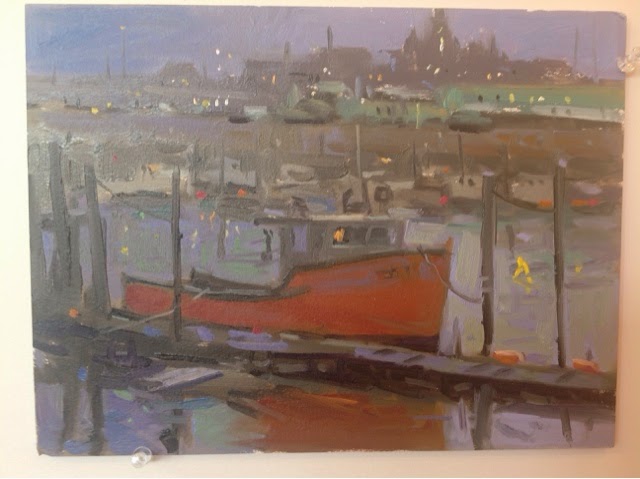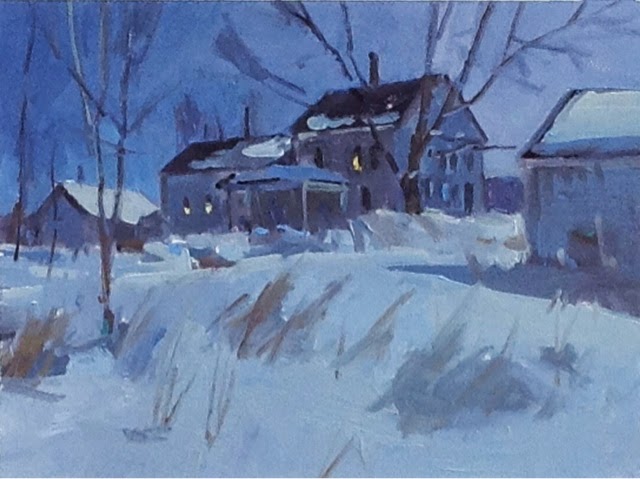I recently ran a workshop for the Foxboro Art Association in Massachusetts on using the elements and principles of design in landscape painting. I explained and illustrated the use of the elements and principles with a digital slide presentation followed by a painting demonstration.
Making use of the elements and principles of design allows the painting to become more than just the sum of its parts.
This is the stuff that makes up a painting. Every painting needs to be composed. Are you a painter who spends time thinking about the principles of design to best compose your paintings or do you more or less wing it and go with what looks good? I firmly believe that a lot of good paintings can be made stronger with a little more thought given to the arrangement of the composition. By the way, I am completely guilty of just winging it sometimes!
Edgar Payne wrote in his book, Composition For The Outdoor Painter; that an artist should 'mix brains with paint.' His examples of different compositional armatures in the book are outstanding and clearly demonstrate a thinker behind the brush. His use of these armatures within his paintings make his work stand out above a lot of landscape work. When a painter thinks about these compositional ideas along with the principles of design, they have a really good shot of simplifying their subject matter to the essentials and can begin painting the relationships of objects, along with relationships of value and color that add strength and unity to the painting. In other words, they PAINT a painting rather than copy or render things.
Making good use of the elements and principles of design allows the painting to become more than just the sum of its parts.
By utilizing the principles of design when organizing a painting, it allows the artist to still explain the big truths about nature but it also allows the artist to use his or her inventiveness in the final product.
In the coming year, I plan on making the use of these elements and principles of design a focus in my weekly painting classes and also in my plein air workshops. I'm in the process of also making it available as an online class.
Interested?
Below is a very quick sketch done in class showing an example of working from a photo reference and strengthening the design using the elements and principles. I rearranged shapes, changed sizes and pushed the compositional movement towards a radial design with a strong diagonal movement.















